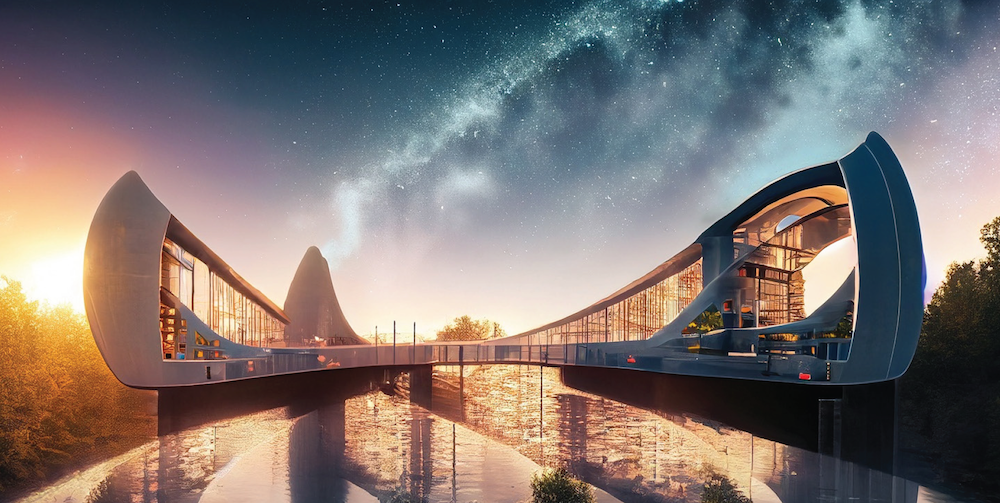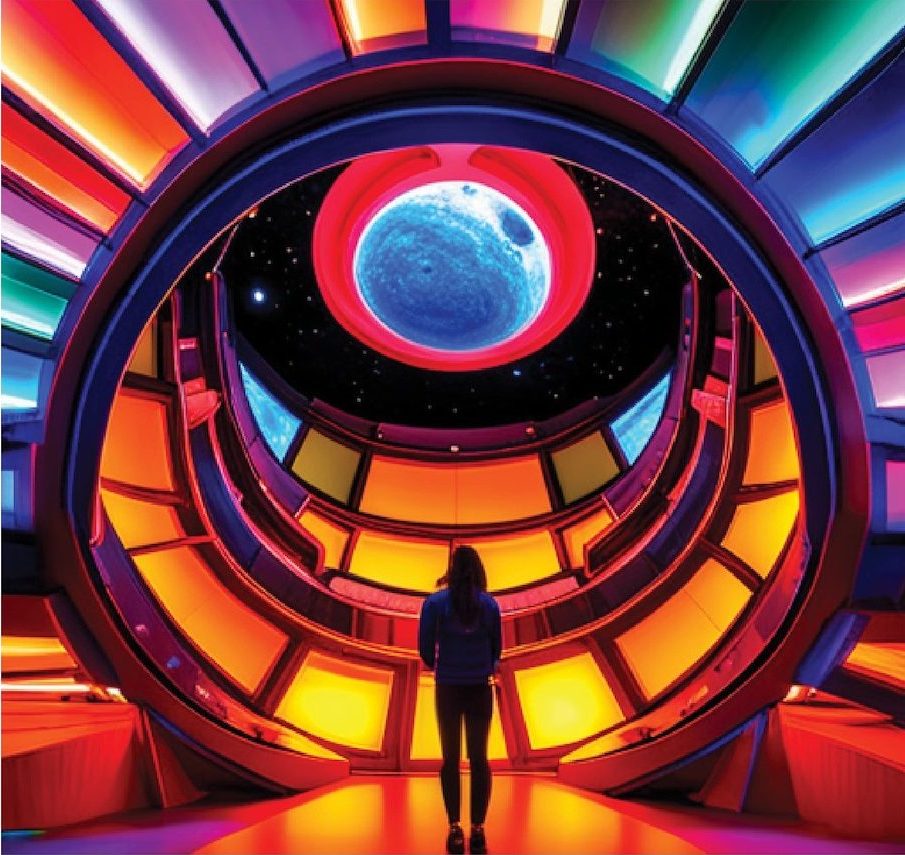DLR Group’s Osma Thompson explores how AI can be used as a tool and aid the design process.
Who Cares About AI?
To keep the philosophically weighty topic of AI as light as possible, consider DLR Group’s brand promise to “elevate the human experience through design.” A major part of that experience is that we use tools to facilitate and aid our most basic functions. We need to stay alert, so we use tools to make coffee; we need to remember things, so we use our smartphones to hop on Google and set reminders; or we need to communicate our thoughts to others, so we write them down on laptops.
The point is that it’s no exaggeration to say that human history is one long history of tool use, and we’ll be so much better when we begin to see AI for what it is – just another tool.

AI and Design
With that out of the way, we can ask what we take to be the more interesting question about AI: How does AI become a tool, and actually aid the design process?
First, let’s be clear that all design begins with an inspiration which is then ideated into several possible iterations. Designers often turn to precedents to glean inspiration for projects. It’s here that DLR Group’s internal customized generative AI is an incredibly useful tool: it draws elements from both our wide-ranging portfolio as well as external inputs. This gives our in-house designers access to what any designer might have with an open-source AI machine, but allows us the privacy vis a vis our own portfolio to freely delve into and explore the possibilities of AI.
Many creatives worry that creativity will be forgotten, and designers will simply build whatever raw material is generated by AI as an output. When put that way, it might sound like confirmation of the creative’s worst fear about AI – that it’s sapping creativity from the process, and letting the robot do the work for us. And yet if we’re honest about the design process, especially with the emergence of computational design that has come from Grasshopper and Rhino over the last two decades, our designers know that you don’t just take the most “optimal” design that the algorithm spits out – you weigh these outputs against others and picks the most suitable solution for the problem. Computational Design, and now AI, allows us to curate these solutions and design concepts a lot faster than if we were to generate them manually.
In this sense, AI simply makes the design process more efficient, and potentially more diverse. Of course, the very speed of the process, and the ability to be surprised by how certain design elements are incorporated, can be incredibly inspiring. We wouldn’t want to downplay how useful of a tool AI can be. Still, we’d want to temper that excitement by saying that AI hasn’t fundamentally changed design – it’s really just an evolution, the next logical step, of what’s been happening all along.
In summary, we are leveraging AI as a tool to augment and iterate our design concepts, not generate them for us.

Case Study
A good example of how our firm has embraced AI is the output of an annual, day-long, company-wide charrette. This year, different groups within the firm were asked to design a structure that would showcase the human experience to extra-terrestrials.
Many of our designers used AI text-to-image prompts to generate visuals that reflected their concepts. The team that I was a part of, for example, was able to dedicate half of our time to ideating our concept and hand sketching, while image generation and curation were handled by our keywording with a text-to-image AI machine.
To really feel how AI impacts design, consider that when charrettes require a pretty image as a deliverable, the concept generation phase is often grossly outweighed by the image execution phase. In this case, our designers were able to spend a good amount of time on concept development, and this resulted in some compelling and exciting final products.
What we believe these charette images represent is how AI expands our design process without replacing it. For as otherworldly as the images are – and their otherworldliness seems to be something of a metaphor for how unhuman AI can often feel – that process is nothing without human creativity.


